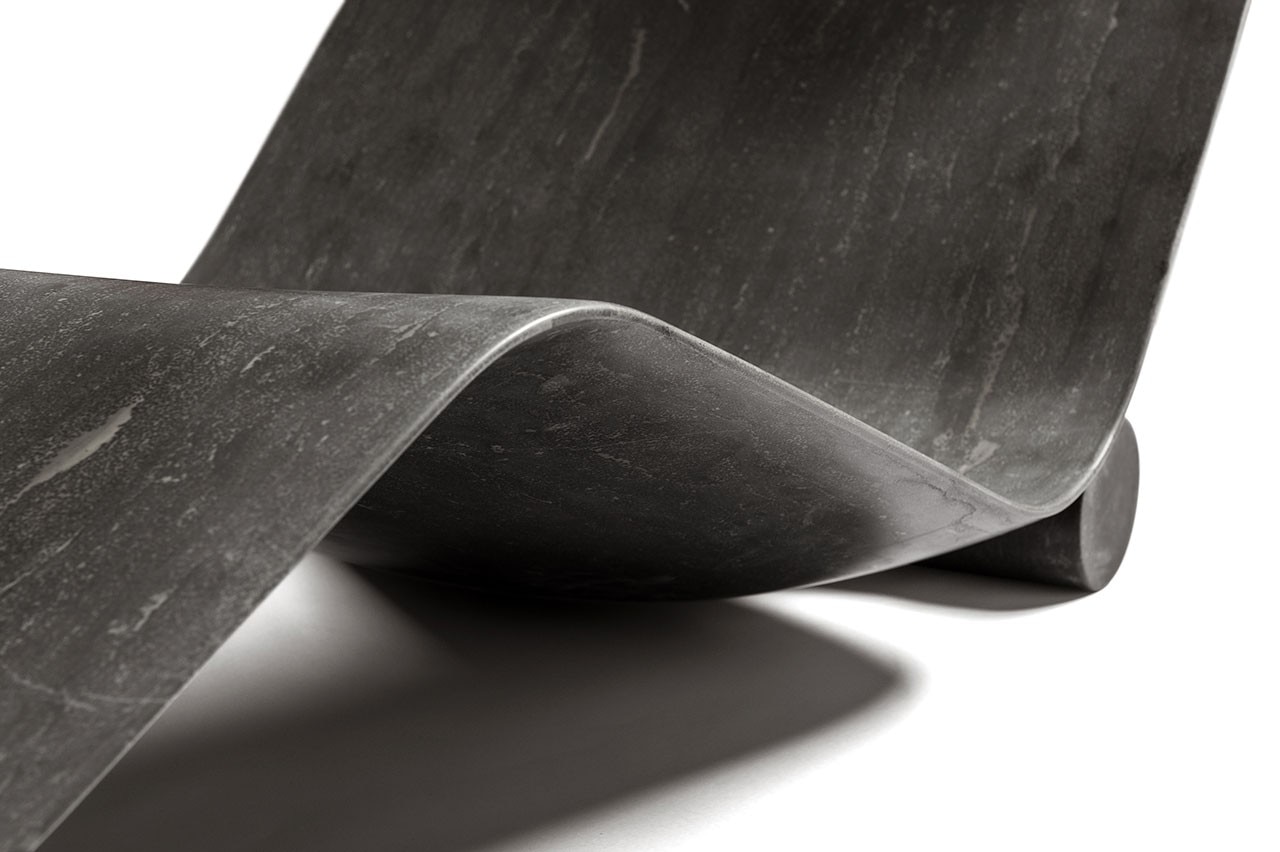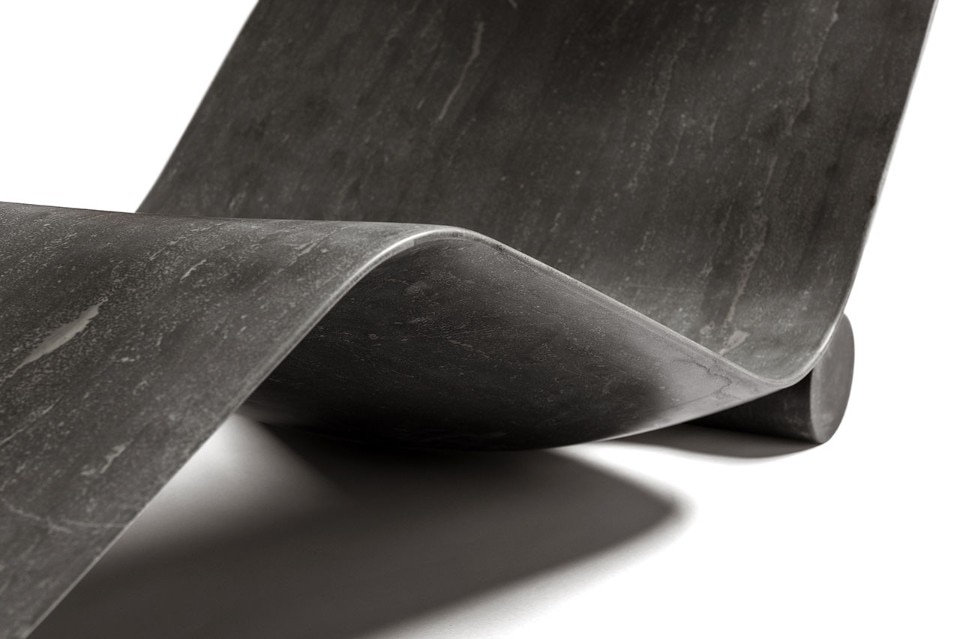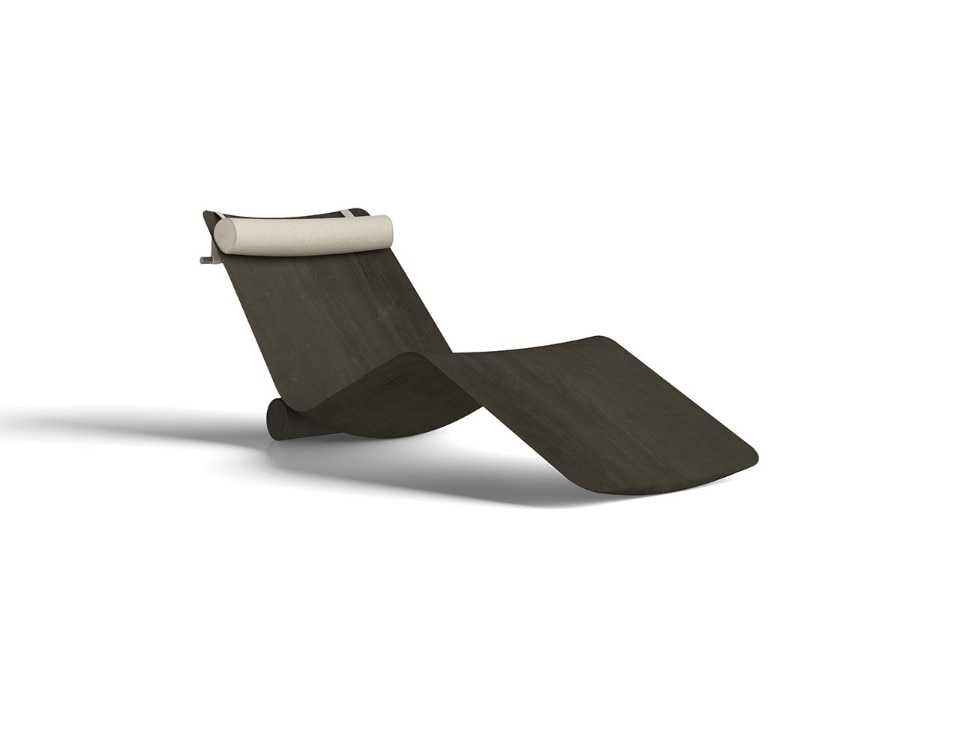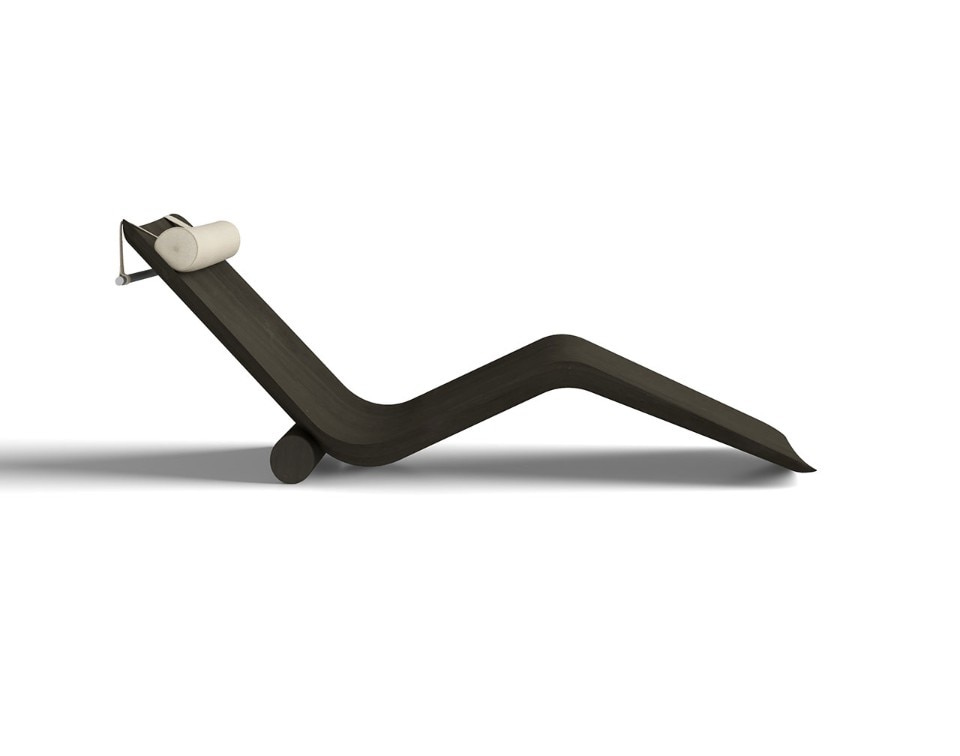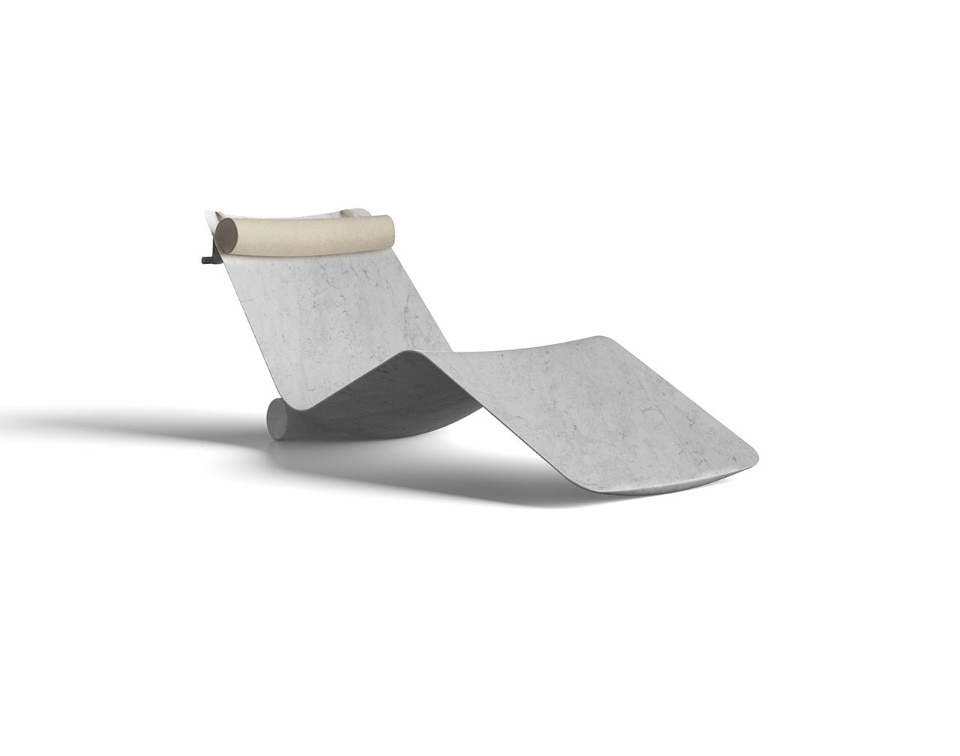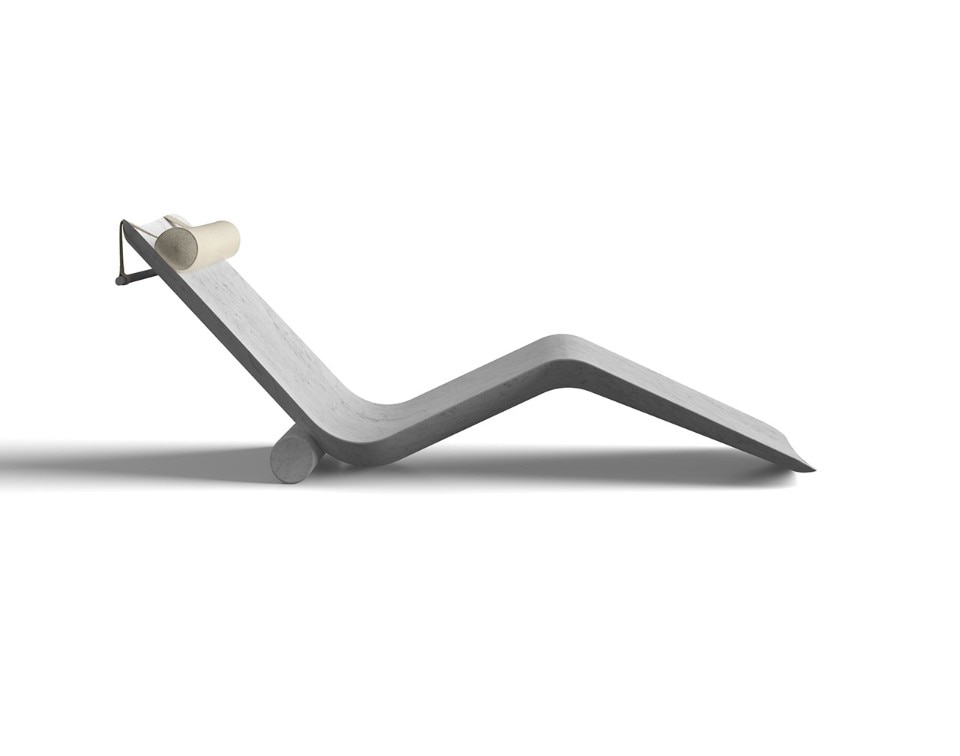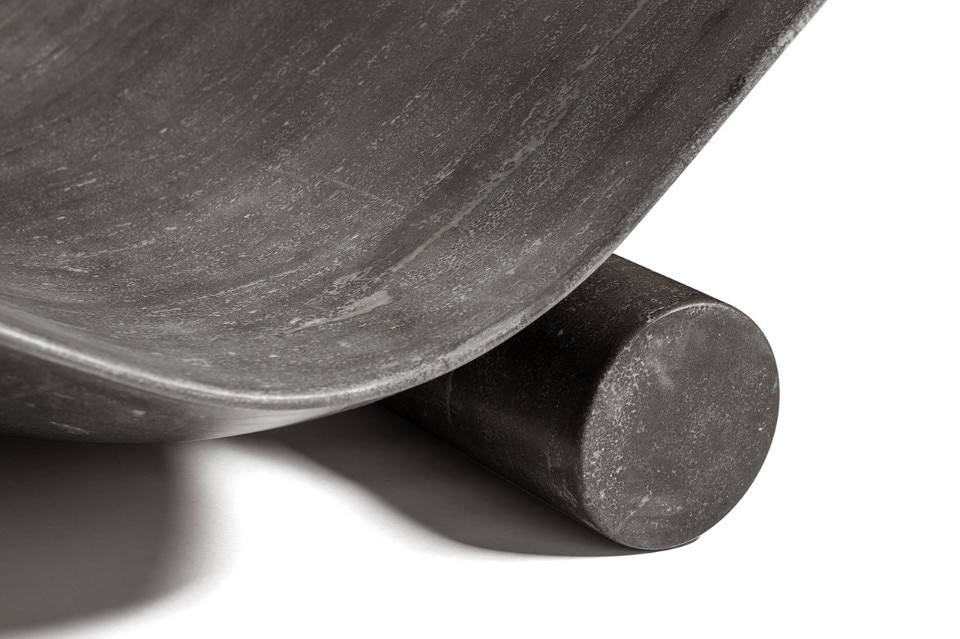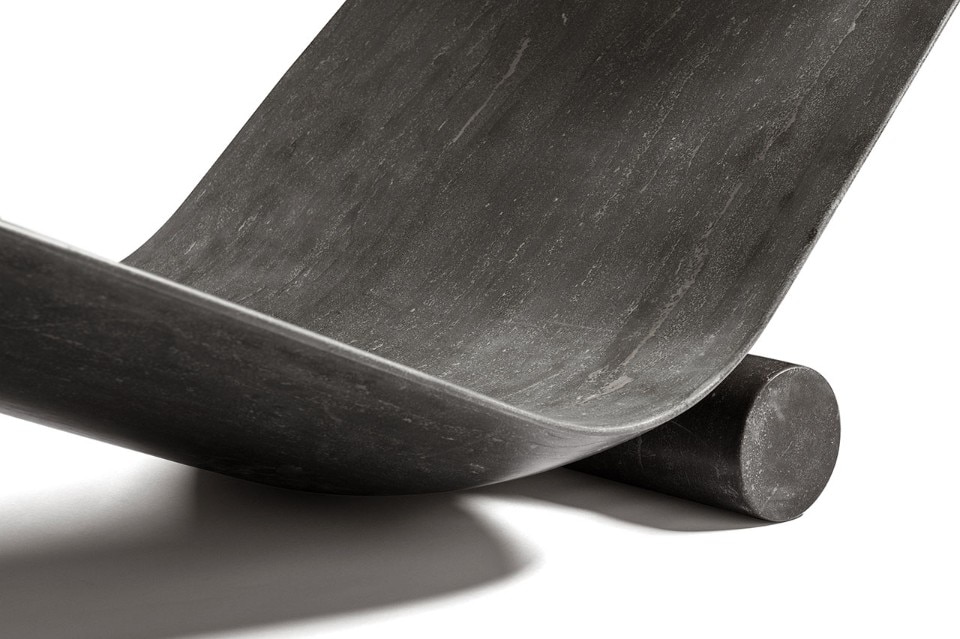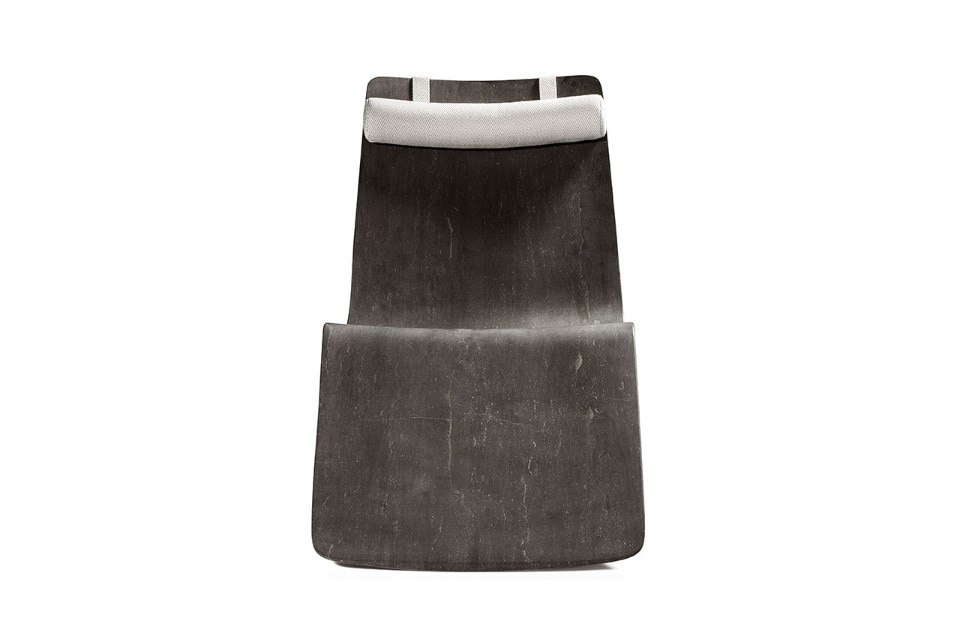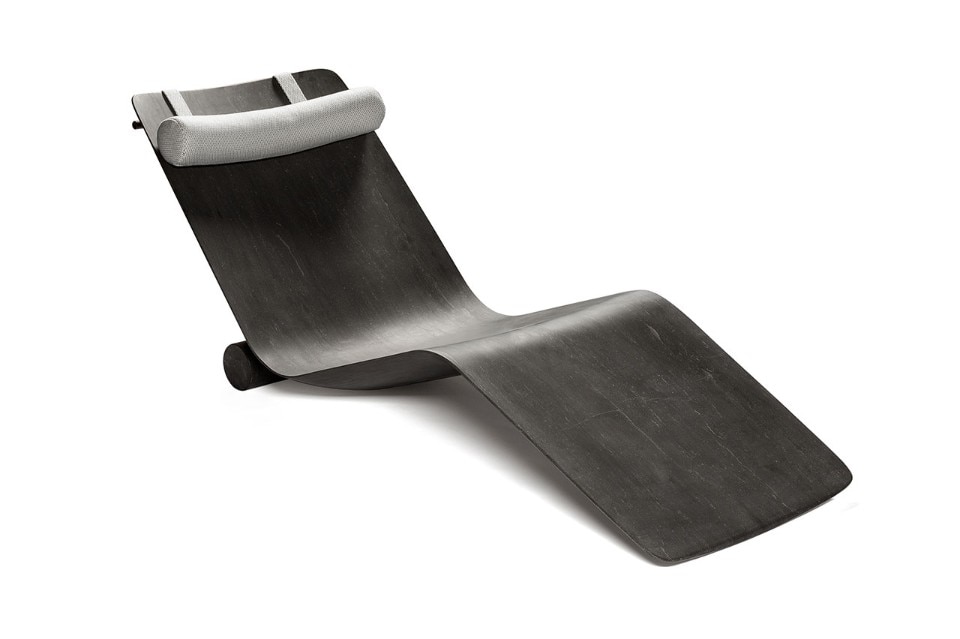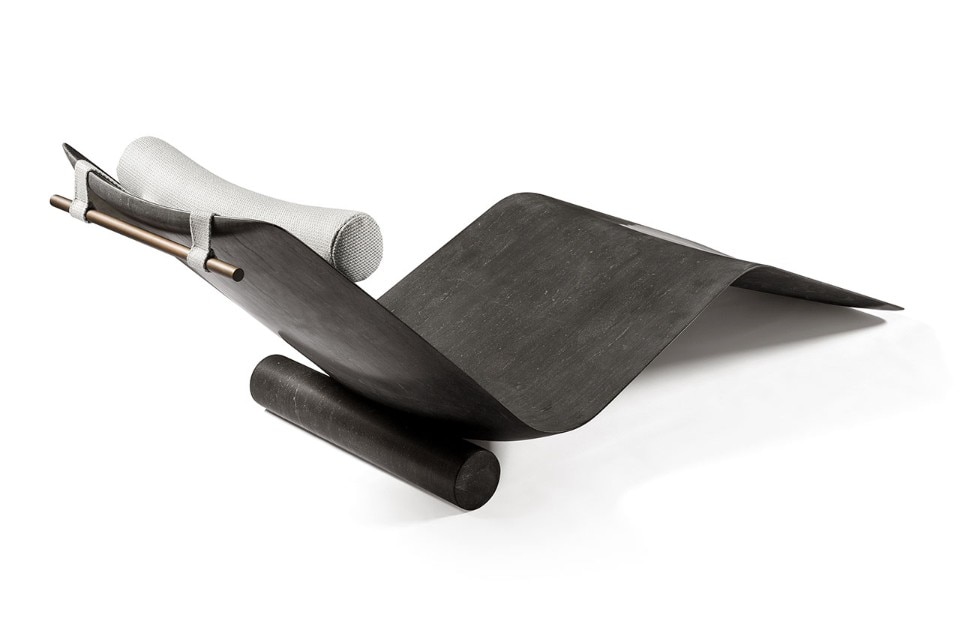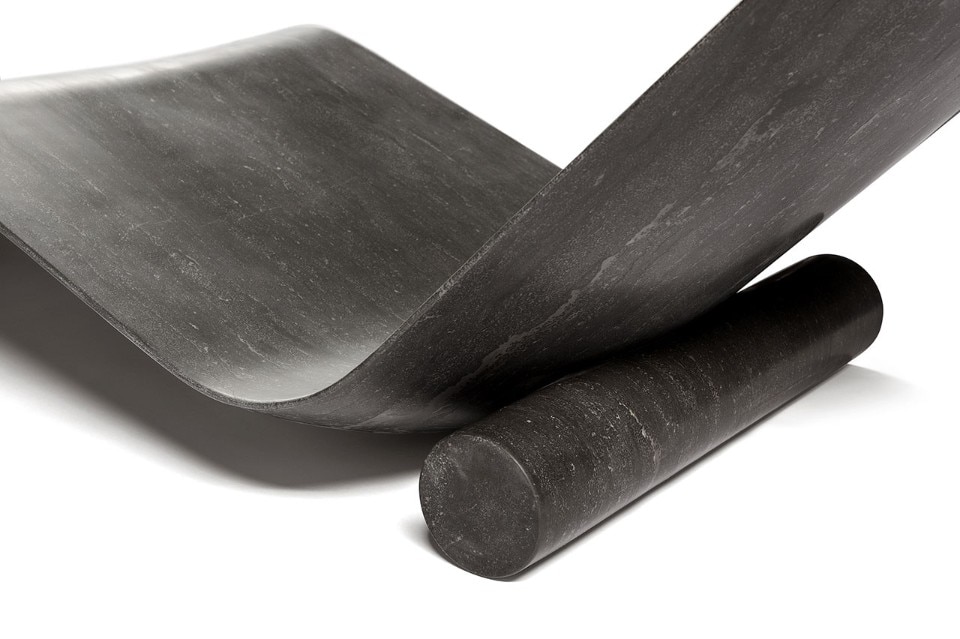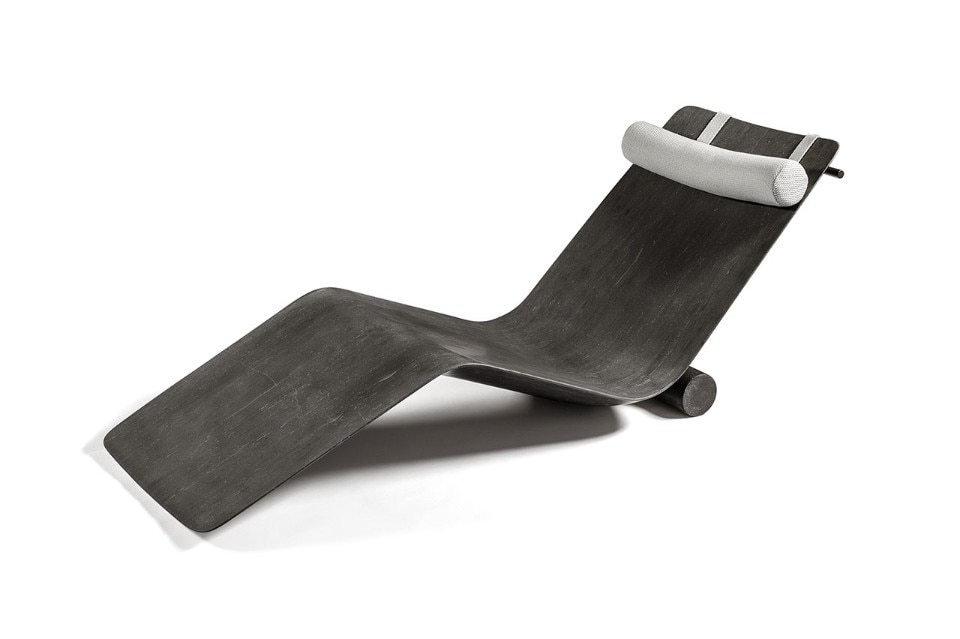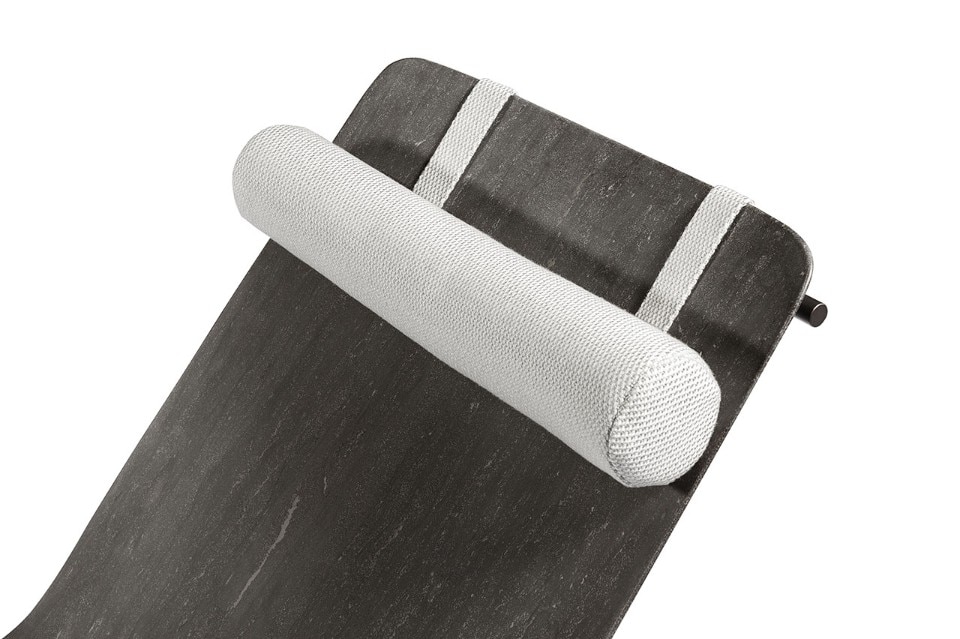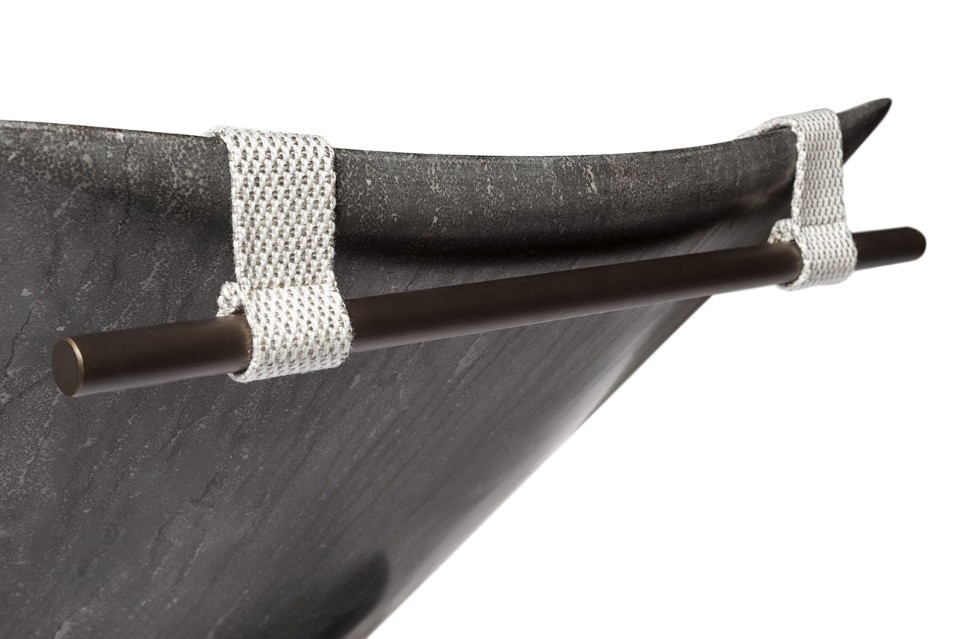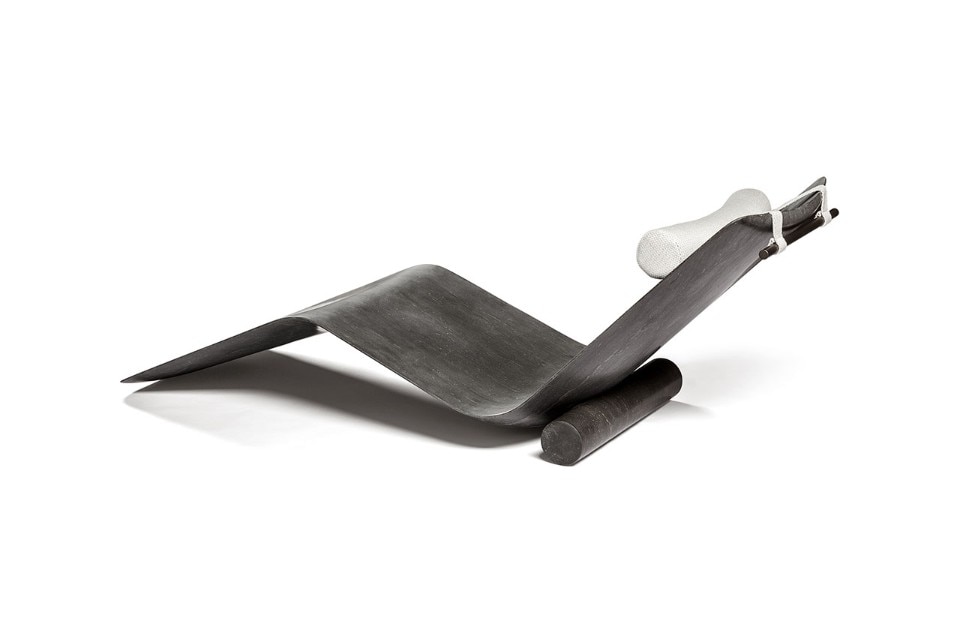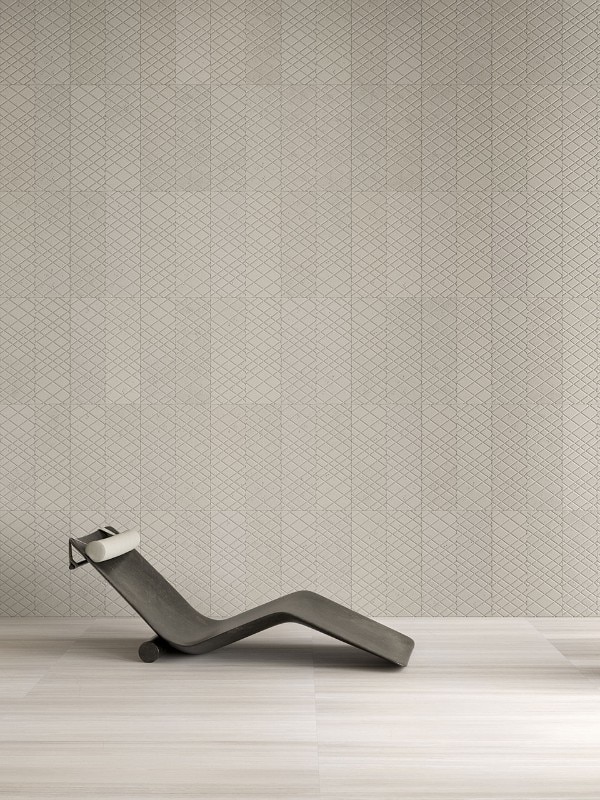Not a sculpture, but an actual design piece. Elegant and finely smooth, the Curl chaise longue designed by Piero Lissoni for Salvatori is crafted from a single piece of natural stone, made with the most advanced CAD/CAM technology, which is used only “to extract what is superfluous from the marble,” according to the designer, who for this Tuscan brand founded in 1946 has worked on various products, like the table collection that, reduced to only 5 mm on the edges, challenged the company’s engineering skills. And this impressive engineering proved fundamental for Curl as well.
“We worked on the sections, as if it were the body of a car or an aeroplane engine,” continues Lissoni, “making them extreme and pushing the stone to the limit”. Instead, the finishing is done by hand and, as in keeping with the tradition of Salvatori, aims to maintain that natural look: in this case, Bianco Carrara marble or Pietra d’Avola. Despite the elevated cost (around 20,000 euro), the chaise longue – suited to both outdoors and indoors – is not a limited edition: it is available in the company’s catalogue and is made to order.
Curl, why this name?
It corresponds to a design moment when, working on the computer in the three XYZ directions, a curve with a series of information given by the robot to the system appeared on the monitor. One of the words was curling; hence the name.
Every time I design a project, whether simple or complicated, I have to find an excuse, often it is a technological matrix that allows me to move the bar a little higher.
What was most important to you in this project, the technological or artisan aspect?
Every time I design a project, whether simple or complicated, I have to find an excuse, often it is a technological matrix that allows me to move the bar a little higher. In this case, they asked me to work with stone, with precise thicknesses, so as to reduce the waste of material. The first thing was to dig it manually with the cutters. I liked the idea that it was a human being who drew it, and assembled it, and a semi-human process to build and work it. A lot of curves and details of this chaise longue came out just by optimising this blended process, which combined the work of the craftsman with the quality and precision of a machine. If I had accentuated the curves on the edge, the machine would have had to work in another way. By optimising the time it takes for the tools to pass over the surface, some curves have enabled us to optimise production times. It was a design project tout court. We worked to reduce the amount of stone, avoiding structural risks, by choosing the best pieces. Each chair will look different, because we choose the vein. As a real industrial project, technically we are able to build all the pieces we want.
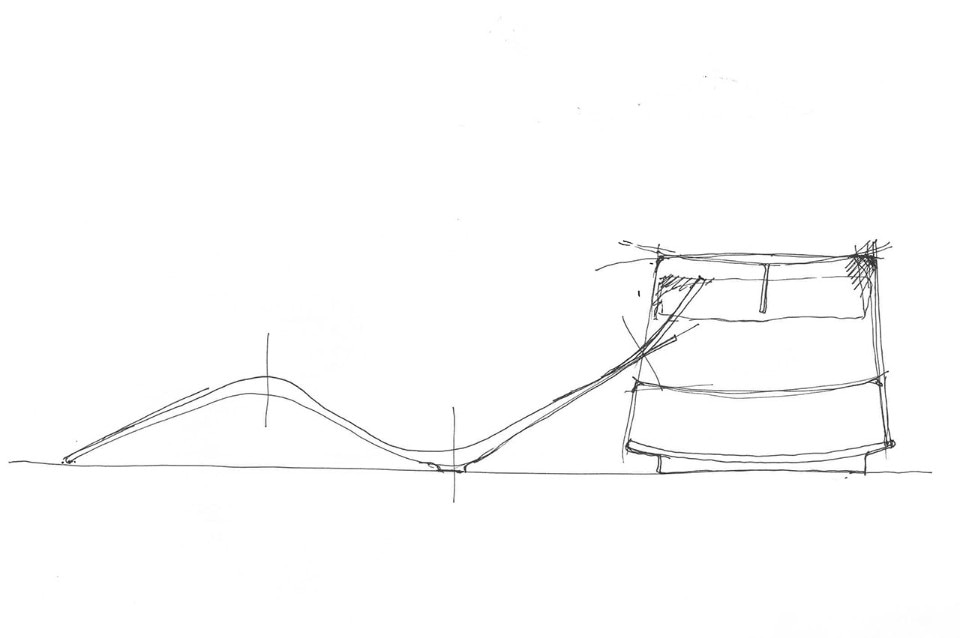
What was it like to work with stone to design a piece of furniture?
We made models in other materials, we used foams, the wood cutter, as normally happens in the world of design. I belong to the old school: I draw, but I also work on prototypes, even in large numbers. In order to arrive at the best possible product, with the fastest and most intelligent processing. Then I managed to make it uncomfortable anyway... [laugh]
To me, the project is a process, an assemblage of curiosities, it means to discovering that tomorrow I might have to design another project and I might have to start playing again.
What makes you happy as a designer?
Actually the path I have just described. For me the project is a process, an assemblage of curiosities, it means to discovering that tomorrow I will have to design another project and I will have to make a commitment to start playing again. It is a team effort: there are many people working with me, who make me change my mind, who get angry. The beauty of the project is not just to freeze the aesthetic model, but to enter into a process that touches on a lot of points: technology, choice of material, how or how to use it, up to an absolutely industrial idea. The energy that industrial imprinting puts into it is fundamental.
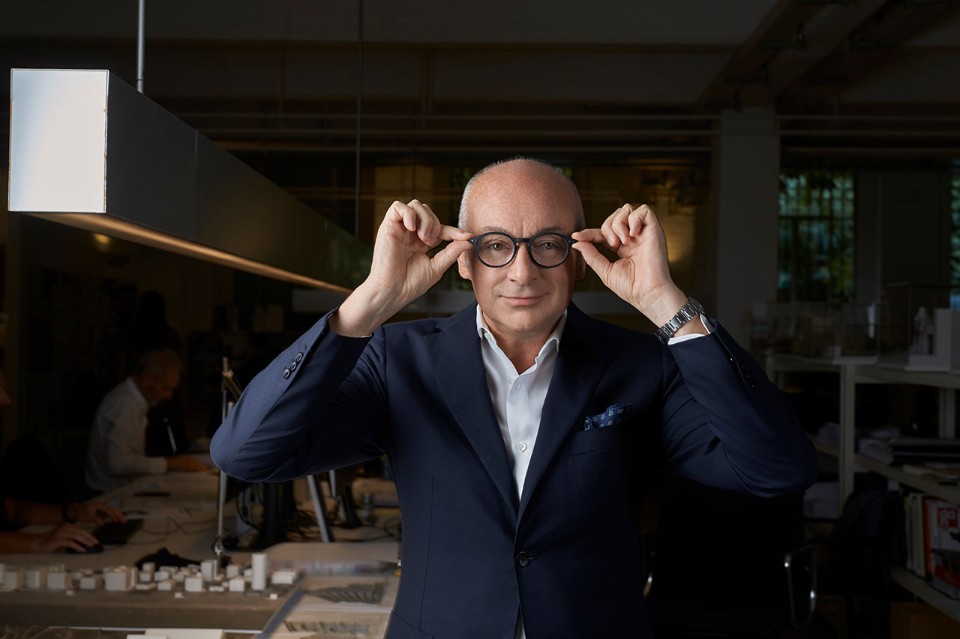
And what is your greatest fear?
I’m always terrified, the question I ask myself most often is: “Are you sure?” The most frightening moment is when I take the second step, the rendering. Doing the math and switching to electronic modeling with a series of maquettes explains what I’m doing. It is at that point that I can decide whether to go ahead with the project or stop. Stopping means killing a creature.
Sustainability means creating buildings that, at the end of their life, will not remain as imperishable ruins; buildings that, in 40 years' time, can be dismantled if someone decides that they no longer have any value.
How often do you have to stop?
There are always 50-60 percent possibilities. Being able to stop is a luxury and an ignominy at the same time. We have to have the courage to stop, I happened to stop a lot of projects when I realized that I would have to work on them for years, without bringing home the skin. As an architect, it takes more courage to stop than to continue. Design is more honest: there are three counterparts, the designer, the company and the market. A project may be good enough for me and the company, but then it is always the market that decides. With architecture, on the other hand, there are always many sacrificial victims. By virtue of the size and going to humanize a space, the weight of architecture is different. It is no coincidence that I design pieces of architecture that have a limited duration: after few decades, you can restore them or dismantle them and make them become something else. A building must last the right amount of time; it must also have the capacity and the possibility of being transformed into something different. Sustainability means creating buildings that, at the end of their life, will not remain as imperishable ruins; buildings that, in 40 years' time, if someone decides that they no longer have any value, they can be dismantled.
A designer you admire? And why?
There are so many of them. I should make a reverse list, the ones I don't like. I like them all: Eames, Castiglioni, Zanuso, Scarpa, Magistretti. The great Scandinavians, like Wegener; some Germans, not necessarily Dieter Rams. Many contemporary designers, like Jonathan Ive, Antonio Citterio, Rodolfo Dordoni.
What object has changed your life?
The object that changed my life is the computer: its meaning and its model of intelligence. And, again, home domotic management, the software that allows you to use a mobile phone, the robots in the operating room for open heart surgery. Thinking about an object, for me a great source of inspiration has always been Toyo: when I see it, I say to myself: “How can you be so good at it?”.
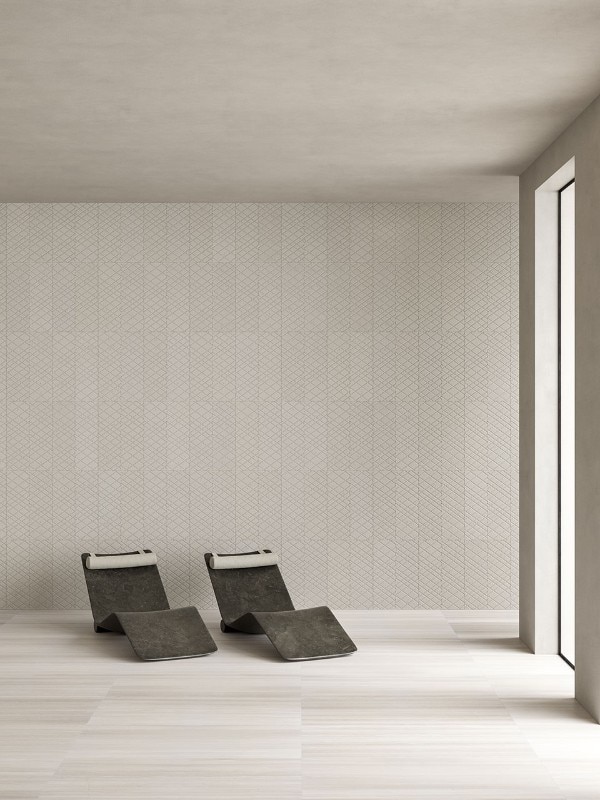
Being able to travel through time, which era (past or future) would you choose?
I feel comfortable in mine. The past era, I am thinking of the post-war period, was one of the most interesting, with the birth of a new model of humanism and a new industrial model. And then with new needs, I reinvented. The future interests me little, I will discover it tomorrow. I believe that everyone is a child of his own time.
It takes a dose of anarchy and a lion attitude: more to kill projects than to make them.
Advice to a designer who’s starting?
Change profession. No, I’m joking. I would suggest an open approach. You don’t necessarily have to be a designer: there are a lot of parallel worlds, you can become a company interface, a technologist... If, on the other hand, you actually want to be a designer, I would tell that it takes great discipline, a lot of courage, the desire to study, which does not mean copying. And then the ability to reinvent oneself every day, like children, with daily joy: you have to imagine that tomorrow will be the best day in the world. Finally, it takes a good dose of anarchy and a lion attitude: more to kill projects than to make them. I forgot, as many people have said before me: you have to be curious.
- Product name:
- Curl
- Designer:
- Piero Lissoni
- Company:
- Salvatori
- Year of production:
- 2020


